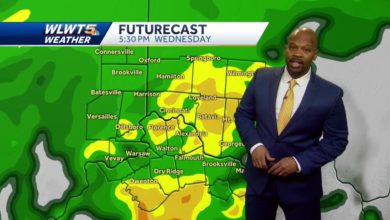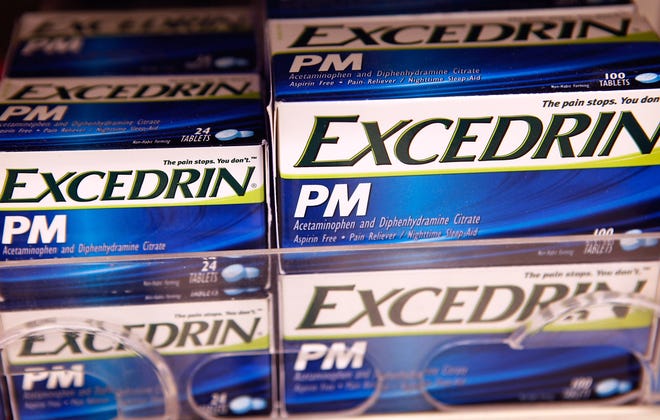
The Food and Drug Administration on Monday expanded the emergency use authorization of a booster dose of the Pfizer-BioNTech coronavirus vaccine to include youths 12 to 15.
The agency also reduced the required wait time for a booster from six to five months after the second shot for anyone 12 and older.
The booster dose is the same strength as the dose approved in the primary series. A booster was previously authorized by the FDA for emergency use for those age 16 and older.
“Hopefully this will be not just a call for people to go get their booster shot,” but for the tens of millions of unvaccinated Americans to rethink that choice, FDA vaccine chief Peter Marks said. “It’s not too late to start to get vaccinated.”
The Centers for Disease and Control and Prevention still must sign off on the authorization.
Health care systems are reporting record hospitalizations among children amid a coronavirus surge driven by the highly transmissible omicron variant. During the week of Dec. 22 to Dec. 28, an average of 378 children age 17 and under were admitted per day to hospitals with the coronavirus, a 66% increase from the week before, the CDC reported Thursday.
The previous high over the course of the pandemic was in early September when child hospitalizations averaged 342 per day, the CDC said.
The FDA also authorized a third dose at least 28 days following the second one for kids ages 5-11 who have certain kinds of immunocompromise.
“With the current wave of the omicron variant, it’s critical that we continue to take effective, life-saving preventative measures such as primary vaccination and boosters, mask wearing and social distancing in order to effectively fight COVID-19," Acting FDA Commissioner Dr. Janet Woodcock said.
Also in the news:
►Detroit Public Schools postponed the start of school for the district's 50,000 students until at least Thursday, citing the city's record high infection rate.
►Children ages 5-11 in New Orleans must now be vaccinated or show proof of a recent negative coronavirus test to visit restaurants and other public places. The mandate previously was for patrons ages 12 and up.
►The nation's seven-day rolling average of positive COVID tests is approaching 20% – and is closing in on the all-time high average of more than 22% in April 2020.
►Rhode Island's state-run Eleanor Slater Hospital has reached crisis staffing status and has notified employees with "mild symptoms" of the coronavirus that they can work.
►The Tallahassee Democrat's Person of the Year for 2021 is Tanya Tatum, the director of student health services at Florida A&M University, and the many people working with her at a school test site that has administered more than 500,000 tests since opening in April 2020. The Democrat is part of the USA TODAY Network.
📈 Today's numbers: The U.S. has recorded more than 55 million confirmed COVID-19 cases -- or one for every six people in the country -- and more than 826,000 deaths, according to Johns Hopkins University data. Global totals: More than 291 million cases and 5.4 million deaths. More than 205.8 million Americans – 62% – are fully vaccinated, according to the CDC.
📘 What we're reading: Transgender adults are having a much more difficult time than the overall population in getting adequate nourishment during the COVID-19 pandemic, according to a new study. The gap was even more severe for transgender people of color, who were six times as likely to experience food insufficiency as cisgender white adults. USA TODAY's Bill Keveney writes.
Keep refreshing this page for the latest news. Want more? Sign up for USA TODAY's free Coronavirus Watch newsletter to receive updates directly to your inbox and join our Facebook group.
Physician urges 'maximal telework' for Congress because of rising infections
Congress’ top doctor urged lawmakers on Monday to move to a “maximal telework posture,” citing surging numbers of COVID-19 cases at the Capitol that he said are mostly breakthrough infections. The seven-day average rate of infection at the Capitol’s testing center has risen from less than 1% to more than 13%, Dr. Brian Monahan, the attending physician, wrote in a letter to congressional leaders obtained by The Associated Press. Monahan cited “an unprecedented number of cases in the Capitol community affecting hundreds of individuals.”
"While some view the ... coronavirus disease as 'endemic,' the 'new normal,' and 'inevitable,' these views are premature," Monahan wrote. "The entire community must continue to take every measure to suppress the rapid spread of this disease."
New York City battles surge, opens schools for 1 million students
New York City schoolchildren returned to the classroom Monday despite a surge in infections over the holiday break. David Banks, the new schools chancellor, said the city has shored up its pool of substitute teachers and had administrative staffers available to pinch hit for teachers who are absent because of the virus. The district has more than 1 million students; eight out of 1,700 schools were reportedly closed because of the virus Monday.
Mayor Eric Adams, sworn in Saturday, vowed Monday to keep schools safe and power the city through the rise in coronavirus cases. Adams said his office is studying whether the city can mandate testing in schools if there are sufficient supplies and if Gov. Kathy Hochul needs to sign off on such a move.
“We’re going to pivot. We’re going to shift. We’re going to adjust. We’re going to get it done," Adams said. "That’s the bottom line. We’re going to keep schools open."
WHO official eyes 2022: Progress will depend on effectiveness of vaccines
How well vaccines hold up as the coronavirus mutates will determine the world's ability to tamp down the pandemic in 2022, the head of the health emergencies program at the World Health Organization says.
The health website STAT asked Dr. Mike Ryan for a prediction of what challenges public health officials will face in 2022. He said a lot will hinge on the level of protection current vaccines provide. It’s a big decision to switch production, but might be necessary if vaccines are no longer effective, he said.
"If there’s a need to switch vaccine composition, how quickly that can be done?" Ryan said. "You can only think in scenarios. There’s so many variables that affect the outcome in extreme ways."
CDC could add negative test to latest isolation guidance
The CDC is considering amending its new, five-day isolation guidance for asymptomatic patients to include testing as soon as today, Dr. Anthony Fauci said Sunday. Last week, the CDC cut in half the amount of time it recommends asymptomatic people should isolate after testing positive. The recommendation does call for wearing masks in public for the next five days but dropped any requirement of a negative test.
Fauci, President Joe Biden's chief medical adviser, told ABC News' "This Week" the CDC is aware of "pushback" against dropping a requirement that the patients also test negative. The new rules involve isolation – for people who have tested positive – but do not involve quarantine rules for those exposed to infected people.
Secretary of Defense Lloyd Austin tests positive for COVID-19
U.S. Defense Secretary Lloyd Austin has tested positive for COVID-19 after exhibiting symptoms while at home on leave, he announced Sunday on Twitter. "I will quarantine myself at home for the next five days," said Austin, adding: "I plan to attend virtually this coming week those key meetings and discussions required to inform my situational awareness and decision making."
His last meeting with President Joe Biden was Dec. 21, Austin said, and he tested negative that morning. Austin said he hasn't been in the Pentagon since Thursday. Austin, 68, said he's fully vaccinated and received a booster in October.
“The vaccines work and will remain a military medical requirement for our workforce. I continue to encourage everyone eligible for a booster shot to get one. This remains a readiness issue,” he said.
Tested positive for COVID? Do you need to isolate or quarantine?
Testing positive for COVID-19 starts a confusing, disruptive and at times frightening process – one that millions of Americans will likely go through in the coming weeks.
There is a difference between isolation and quarantine. Quarantine means keeping someone who was in close contact with someone who has COVID away from others. Isolation means keeping someone who is sick or tested positive for COVID-19 without symptoms away from others, even in their own home, according to the CDC.
If you are fully vaccinated you do not need to quarantine unless you have symptoms. But the CDC says isolating is a necessary step if you test positive whether you’re vaccinated or unvaccinated, and whether you have symptoms or feel fine.
The CDC in late December shortened the time it recommends people isolate, saying: "People with COVID-19 should isolate for 5 days and if they are asymptomatic or their symptoms are resolving (without fever for 24 hours), follow that by 5 days of wearing a mask when around others."
Read the CDC's updated guidance on isolating and quarantining.
Contributing: Adrianna Rodriguez and Mike Stucka, USA TODAY; The Associated Press








